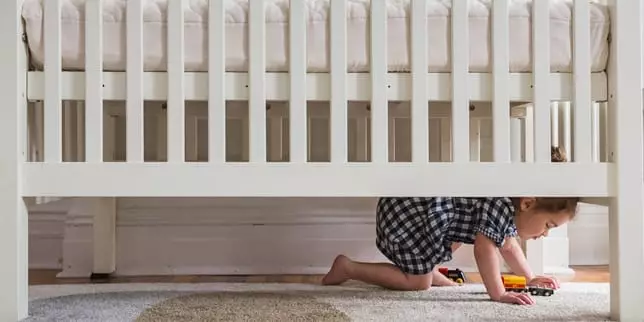Transitioning your little one from a crib to a toddler bed is a significant milestone in their development. This leap symbolizes not only an upgrade in sleeping arrangements but also a pivotal shift in independence. However, many parents feel rushed into this change, often influenced by societal expectations or the briefing of friends and family. This article sheds light on the critical factors that determine the right time to make this transition and offers insights on how to prepare for this important change in your child’s life.
Understanding Timing: Why It’s Crucial to Wait
The timing of when to move a toddler to a bed is crucial. Rushing this decision can lead to sleep disruptions and behavior issues that may have long-lasting consequences. Firstly, it’s essential to note that many toddlers are not developmentally prepared for a bed transition until they reach at least three years of age. Before this age, your child has developed an attachment to the crib, which acts as a secure environment. Removing this familiar space prematurely can lead to anxiety and uncertainty, creating a chaotic bedtime routine.
Parents should observe their child’s readiness. If your toddler still enjoys the security of their crib and has minimal issues sleeping, then it’s advisable to allow them to remain in it until they express a desire to transition. This organic approach recognizes the individuality of each child and helps foster a sense of comfort in their nighttime environment.
Before making any significant changes, parents should assess their toddler’s sleep behavior. If your child is already facing sleep-related issues—such as difficulty falling asleep, frequent awakenings, or early rising—transitioning to a toddler bed may exacerbate these challenges. In this case, prioritizing sleep improvements before undergoing a significant change is vital.
This may include implementing a consistent bedtime routine, adjusting the sleep schedule, or utilizing sleep training methods. Parents should aim to establish a stable environment conducive to sleep, which can help create a smoother transition when the time is right.
If your child is content and sleeps well in their crib, there is no compelling reason to rush them into a toddler bed. The notion that cribs are exclusively for “little babies” can put undue pressure on parents, leading to premature transitions. Instead, embrace your child’s comfort in their crib. There is no urgency to change sleeping arrangements unless they express a longing for a “big kid bed.” It’s essential to understand that satisfaction and contentment are valid indicators that your child is both emotionally and developmentally prepared for the transition.
Another factor in the crib-to-bed transition is your child’s behavior throughout the day. If they display boundary-testing behaviors, it is likely these will manifest at bedtime as well. Toddlers thrive on predictability and clear boundaries. Parents should strive to establish these boundaries during daily routines before moving to a bed. Techniques such as using a toddler clock can help; it can signal when it’s appropriate to be awake and when it’s time to rest.
For particularly active toddlers who enjoy climbing out of their cribs, imposing boundaries physically by reintroducing a sleep sack or a reward chart for staying in bed can be beneficial. Each climbing attempt might lead to a quiet return to bed—an indication to the child that their behavior will not garner a reaction.
For families expecting another child, the decision to transition may be complicated. The desire to prepare a toddler for a new sibling can pressure parents to accelerate the timing of a bed transition. However, if your toddler isn’t ready, it may be beneficial to keep them in their crib longer, even if this means having two cribs temporarily. Disruptions caused by a restless toddler slipping into your bed can create chaos for parents managing a newborn’s feeding and sleeping schedule.
Lastly, if you find yourself in a situation where your child has already transitioned to a bed but is struggling, it’s never too late to revert to a crib or use a travel crib for added security. Often, toddlers simply need the reassurance of enclosed boundaries to facilitate calmer nights.
Transitioning from a crib to a toddler bed can be seamless if parents take the time to consider their child’s readiness and overall behavior. By observing their unique needs, reinforcing boundaries, and ensuring the timing is right, families can navigate this pivotal stage with confidence and ease.

